Dear @s colleagues and friends @s
This article, shared with us by a dear colleague, was written by Lisa Marshall and Nicholas Goda, published on August 1, 2024 in the newsletter of the University of Colorado at Boulder (UC-Bolder) and translated by us for this space. Let's see what it's all about...
In the quest to develop real-life materials to replace and repair parts of the human body, scientists face a formidable challenge: real tissues are often strong and elastic and vary in shape and size.
A team led by CU Boulder, in collaboration with researchers from the University of Pennsylvania, has taken a fundamental step to decipher that code. They have developed a new way of 3D printing material that is both elastic enough to withstand a persistent heartbeat, tough enough to withstand the overwhelming load placed on joints, and easily moldable to adapt to a patient's unique defects.
Better yet, it easily adheres to wet tissue.

Their discovery, described in the August 2 issue of the journal Science, helps pave the way for a new generation of biomaterials, from internal bandages that deliver drugs directly to the heart to cartilage patches and needleless sutures.
“Cardiac and cartilage tissues are similar in that they have a very limited capacity to repair themselves. When they're damaged, there's no going back,” said lead author Jason Burdick, professor of chemical and biological engineering at CU Boulder's BioFrontiers Institute. “By developing new, stronger materials to improve that repair process, we can have a big impact on patients.”

Historically, biomedical devices have been created based on molding or casting, techniques that work well for the mass production of identical implants, but are not practical when it comes to customizing those implants for specific patients. In recent years, 3D printing has opened up a world of new possibilities for medical applications by allowing researchers to manufacture materials in many shapes and structures.
Unlike traditional printers, which simply place ink on paper, 3D printers deposit layer after layer of plastics, metals, or even living cells to create multidimensional objects.
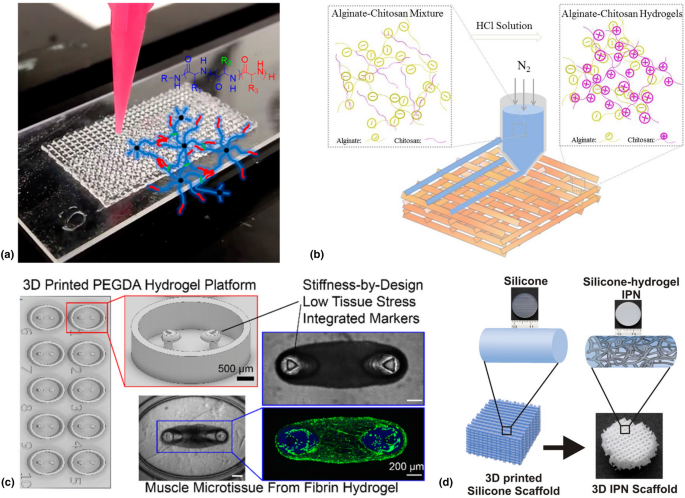
A specific material, known as a hydrogel (the material that contact lenses are made of), has been the favorite candidate for manufacturing artificial tissues, organs and implants.
But getting these materials from the lab to the clinic has been difficult because traditional 3D printed hydrogels tend to break when stretched, crack under pressure, or are too stiff to be molded around tissues.
“Imagine if you had a rigid plastic attached to your heart. It wouldn't deform when his heart beat,” Burdick said. “It would just fracture.”
'Tangle of worms' as inspiration
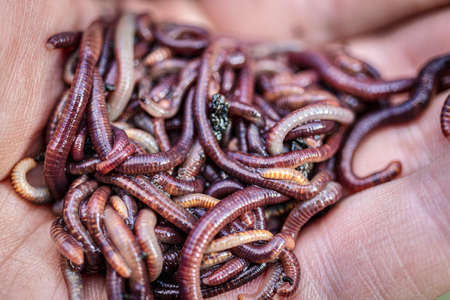
To achieve both strength and elasticity within 3D printed hydrogels, Burdick and his colleagues were inspired by worm tangles, which repeatedly entangle and untangle each other in “a three-dimensional entanglement” that have both solid and liquid properties. Previous research has shown that the incorporation of similarly interwoven chains of molecules, known as “entanglements”, can make them stronger.
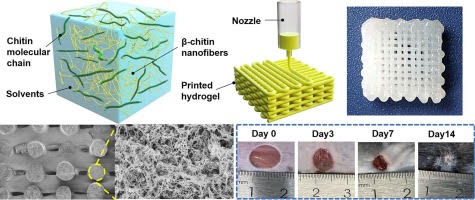
Their new printing method, known as CLEAR (for Continuous-curing after Light Exposure Aided by Redox initiative), follows a series of steps to weave long molecules into 3D printed materials much like these intertwined worms.

When the team stretched and loaded those materials with weight in the laboratory (a researcher even passed her bike over a sample) they discovered that they were exponentially stronger than materials printed with a standard 3D printing method known as Digital Light Processing (DLP). Better yet, they also adapted and stuck to animal tissues and organs.
“We can now 3D print adhesive materials that are strong enough to mechanically support tissue,” said co-lead author Matt Davidson, research associate in the Burdick Laboratory. “We've never been able to do that before.”
Revolutionizing Healthcare
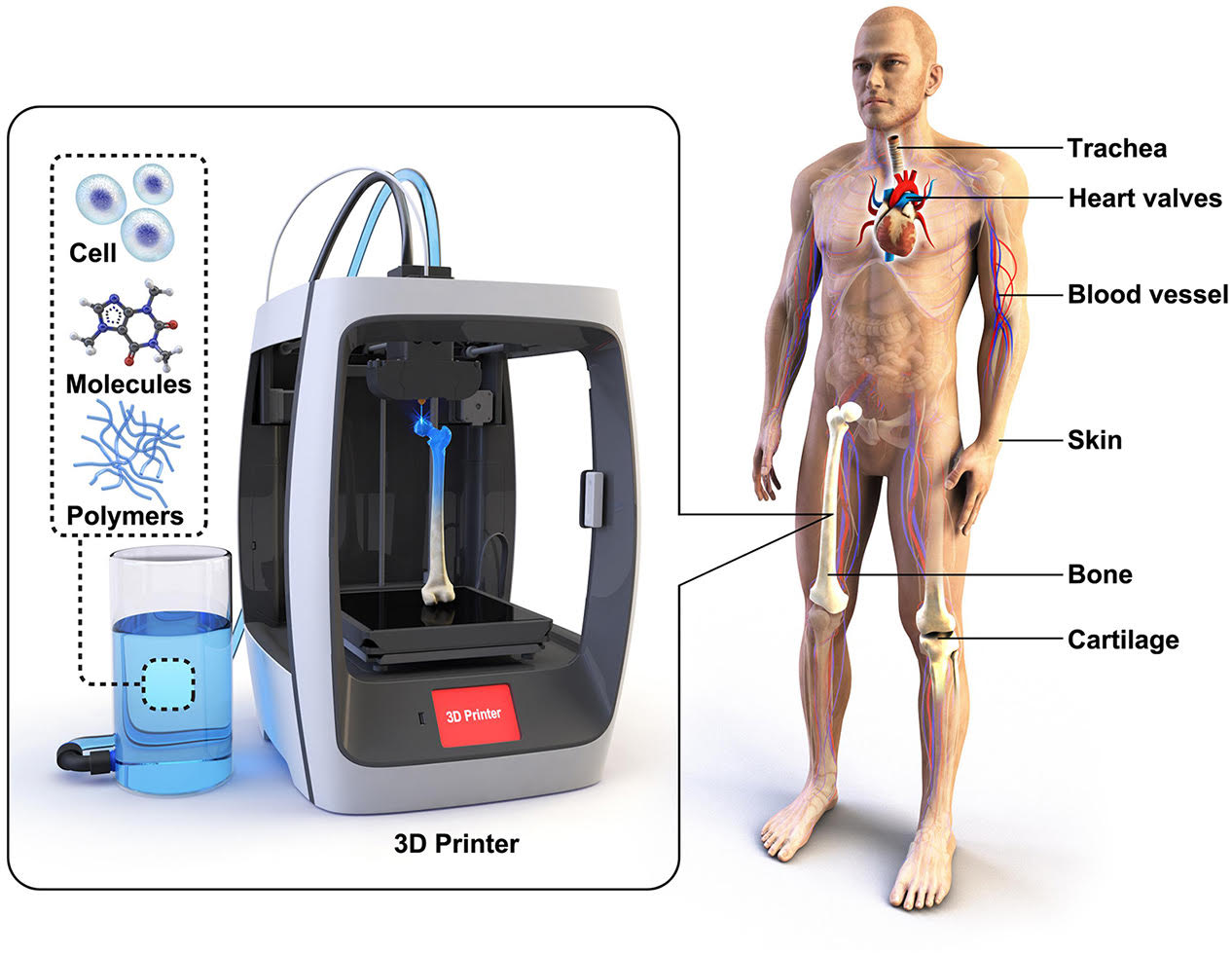
Burdick envisions a day when such 3D printed materials can be used to repair heart defects, deliver tissue-regenerating drugs directly to organs or cartilage, contain displaced discs, or even sew people in the operating room without inflicting tissue damage such as a needle and suture.
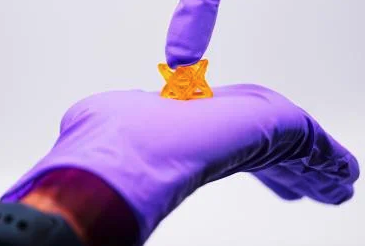
His laboratory has applied for a provisional patent and plans to launch more studies soon to better understand how tissues react to the presence of such materials.
But the team stresses that their new method could have effects far beyond medicine, also in research and manufacturing. For example, their method eliminates the need for additional energy to cure or harden parts, making the 3D printing process more environmentally friendly.
“This is a simple 3D processing method that people could use in their own academic laboratories, as well as in industry, to improve the mechanical properties of materials for a wide variety of applications,” said first author Abhishek Dhand, a researcher at the Burdick Laboratory and a doctoral candidate in the Department of Bioengineering at the University of Pennsylvania. “It solves a big problem for 3D printing.”
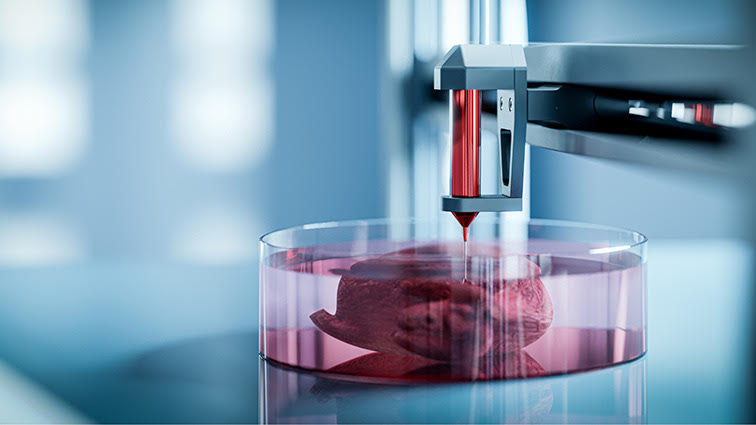
Other co-authors of the article are Hannah Zlotnick, a postdoctoral researcher at the Burdick Laboratory, and National Institute of Standards and Technology (NIST) scientists Thomas Kolibaba and Jason Killgore.

